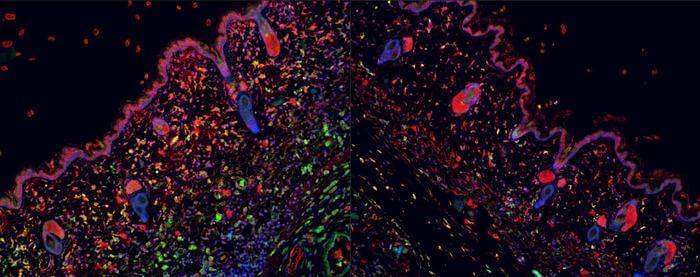A recent study, led by a team of researchers including those from the George Washington University, suggests that a marijuana-like compound, anandamide, shows potential as a new treatment for a severe autoimmune skin disease known as skin lupus.
If the findings from the mouse study can be replicated in human trials, anandamide could one day be utilized to address the painful and disfiguring skin lesions characteristic of cutaneous lupus erythematosus, stated Adam Friedman, Professor and Chair of the Department of Dermatology at the GW School of Medicine & Health Sciences.
Anandamide, an endocannabinoid that interacts with receptors similar to those activated by THC and CBD, the well-known active components in marijuana, is produced naturally by the human body. This endogenous compound is believed to play a role in regulating various bodily systems, including the immune system.
Friedman and his team sought to explore whether they could harness the potential of anandamide to treat or prevent skin lupus, a condition thought to arise when the body’s immune system erroneously attacks healthy skin, resulting in rashes and painful sores. Previous research has suggested that dysregulation of the human endocannabinoid system may be a contributing factor to systemic lupus, where the immune system targets its own tissues and organs.
To effectively deliver anandamide through the skin, the team collaborated with scientists at the Albert Einstein College of Medicine, employing nanoparticles for controlled release of the experimental treatment. The researchers tested this platform on genetically modified mice prone to developing the skin disease.
Initially administering anandamide encapsulated in nanoparticles to mice before symptoms emerged, the team observed a delay in the onset of skin lesions. Subsequently, they treated mice that had already developed symptoms, comparing those receiving anandamide in nanoparticles with control mice given the compound without the nanoparticle delivery system. After ten weeks, the nanoparticle-based treatment demonstrated greater reduction in the size and severity of skin sores in the mice compared to anandamide alone.
“If future studies confirm these results, the treatment could prove to be a promising therapy for people coping with skin lupus,” Friedman noted. While doctors currently rely on steroids and other drugs to address the disease, these treatments do not target the underlying pathology. As Friedman emphasized, there exists an unmet need for a more effective treatment.
ThThe study, “Nano-encapsulated anandamide reduces inflammatory cytokines in vitro and lesion severity in a murine model of cutaneous lupus erythematosus,” was published in the journal Experimental Dermatology.
Alongside Adam and Joel Friedman, Erika T. McCormick, a medical student at the GW School of Medicine & Health Sciences, served as the lead author. The research also involved Chaim Putterman and a team from the Albert Einstein College of Medicine, as well as Andrew Draganski from Zylo Therapeutics, a South Carolina company developing the nanoparticle technology. Adam Friedman, Joel Friedman, and Andrew Draganski are co-inventors of the anandamide nanoparticle technology.


